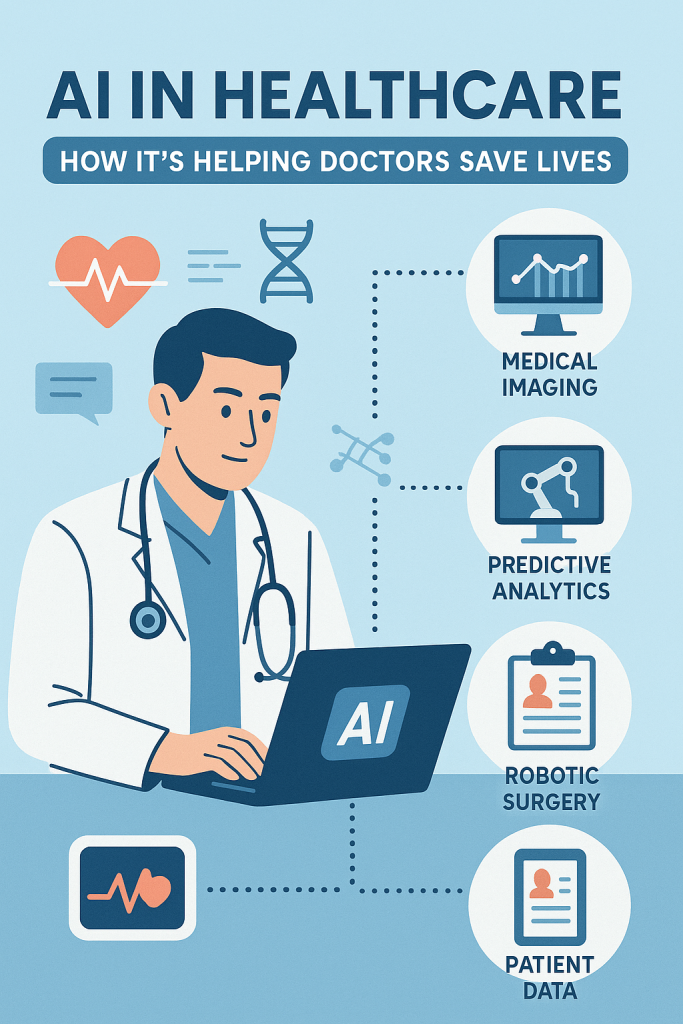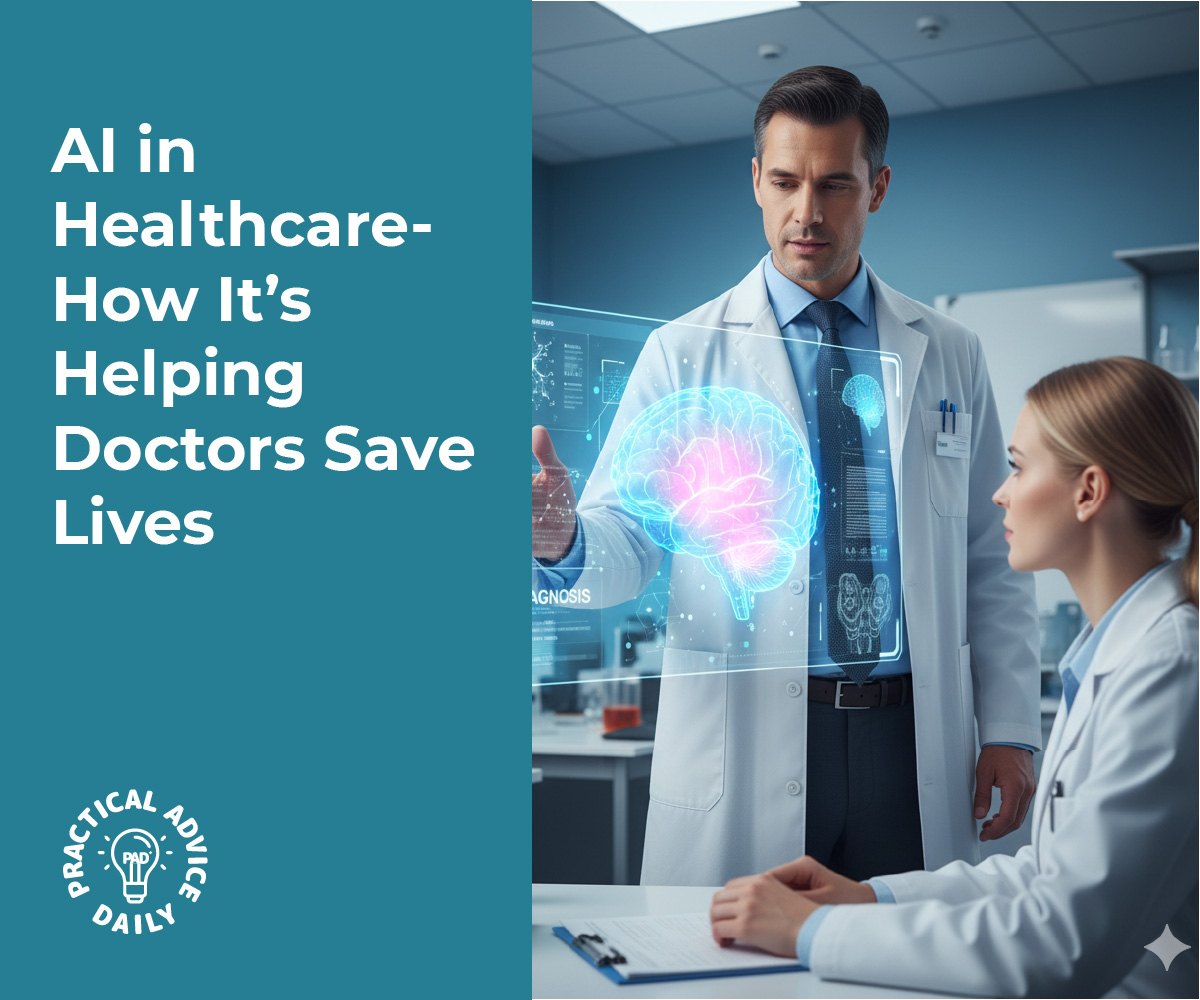Healthcare is something that touches us all, whether through regular checkups, managing chronic conditions, or caring for loved ones. In recent years, artificial intelligence (AI) has begun playing a bigger role in how doctors treat patients and even how new medicines are created. If you are picturing robots in white coats, don’t worry—AI in healthcare is more about smart computer systems that help doctors make better decisions, faster.
In this article, we’ll explore how AI is being used right now in hospitals and research labs. You’ll see how it helps in diagnosing diseases, interpreting medical images like X-rays, and even speeding up the discovery of new drugs. Everything is explained in simple terms, so you can understand how these advances may impact healthcare for you and your family.
Table of Contents
Key Takeaways
- AI helps doctors diagnose diseases more accurately and quickly.
- Medical imaging programs powered by AI can spot tiny details on X-rays or scans that humans might miss.
- AI speeds up drug discovery, helping create new medicines in less time.
- These tools don’t replace doctors—they support and strengthen medical care.
How AI Helps Diagnose Diseases
One of the most powerful uses of AI in healthcare is diagnosing illnesses. Traditionally, doctors rely on their experience, test results, and medical history to figure out what might be wrong. While this works well, some diseases are tricky to detect early, such as cancer or rare conditions.
AI can step in by quickly analyzing massive amounts of medical data. For example:
- Diabetes detection: AI systems can look at eye scans to detect early signs of diabetic retinopathy, which can lead to blindness if untreated.
- Cancer screening: AI programs have been trained to spot unusual patterns in lab tests or scans that suggest cancer, sometimes even before symptoms appear.
Think of AI as a second pair of eyes for the doctor. It can pick up on small clues in the data, helping the doctor confirm a diagnosis or catch something early. This means patients can start treatment sooner, which can save lives.

AI in Medical Imaging
Medical imaging includes X-rays, MRIs, CT scans, and ultrasounds. These pictures give doctors an inside look at the body. The challenge is that images are often complex and small details can be overlooked, especially when a doctor is reviewing hundreds of scans a day.
AI programs are being trained to “read” these images with incredible accuracy. For example:
- Breast cancer detection: AI systems can highlight suspicious spots on mammograms, helping radiologists decide whether further testing is needed.
- Lung scans: AI can check chest X-rays for signs of pneumonia or lung cancer, which can look very subtle in the early stages.
A good way to imagine this is like using the “zoom” function on a camera, but much more advanced. AI can zoom in on details too small for the human eye and point them out to the doctor for closer review. Doctors still make the final call, but AI helps ensure nothing important is missed.
AI in Drug Discovery
Developing new medicines has always been a long and costly process. It often takes years of research and testing before a drug is ready for patients. AI is helping speed up this process by analyzing chemical structures and predicting how they might work in the body.
Here are a few examples:
- Finding COVID-19 treatments: During the pandemic, AI helped scientists quickly test existing drugs to see if they could fight the virus.
- New antibiotics: Researchers are using AI to identify new types of antibiotics, which are badly needed as some infections are becoming resistant to current drugs.
With AI, what used to take years of trial and error can sometimes be done in months. This means new treatments may reach patients faster, especially in urgent situations.
Final Thoughts
AI is not here to replace doctors. Instead, it acts like a smart assistant, giving doctors extra tools to do their jobs better. Whether it’s catching diseases earlier, spotting hidden details in scans, or helping create life-saving drugs, AI is already making a real difference in healthcare today.
For patients, this means a future where diagnoses are more accurate, treatments arrive faster, and outcomes improve. As technology continues to grow, AI will likely become a familiar and trusted part of medical care—quietly working in the background to help save lives.
